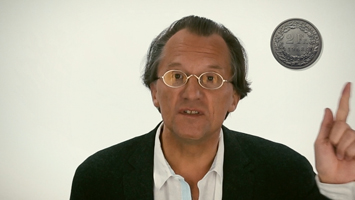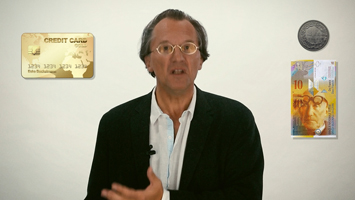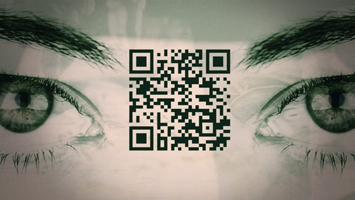Money – One for all
We need money for the necessities of life, and so we must take care in our lives to see that we come to the money we need. Thus money must shape our thinking, must form our thinking. Surely a trivial insight. But if it’s trivial that’s because it’s so normal that we have to concern ourselves with money every day, sometimes more than we want to. It’s trivial only because it’s so powerful.
Money remains the same – regardless of what we pay for

Indeed, let’s start with most normal, everyday activity, the most trivial: We buy something, for example, an apple. It cost money and we get it for money – namely through the trivial process of giving someone money for the apple and in return acquiring the apple. Or we buy a hammer for money. We eat the apple and it’s gone, having nourished us. The hammer, if it’s well made, could outlast a lifetime of strikes. We get both, for money.
Or we buy a stack of paper, naturally again for money. Now I’ll tell you this quite confidentially: these pages are in fact the screenplay for a blockbuster horror movie, a real money-spinner. I’m sure, now that I’ve revealed this little secret, someone will try to pry this script out of my hands, for a price, yielding me a big payday! Because of course I would sell it for money. For money there are not only tangible things like hammers and apples but also notional things, like this screenplay. Or when I accidentally smash the finger of a helpful fellow human being with my hammer, I can transform his pain into money if he demands compensation. What we get money for or what we get for money ranges from the tangible things we can consume or use all the way to immaterial like an intellectual achievement or a mere sensation. It includes just about everything imaginable – how should we say it: things, issues, processes, beings.
All right then, we buy something: an apple for money, a hammer for money and anything else for money. Of course for different amounts of money, and the difference between the amount of money for an apple or for a screenplay will be very large. But that changes nothing: That something with which we can pay for virtually everything is always the same: money. Everything is there for the money and money is there for everything. Like by the Musketeers: All for one and one for all. But things are not quite so heroic here: money does not risk its life to battle for all. On the contrary, the money enters and exits every purchase intact and unchanged. It remains the same – regardless of what we pay for and regardless of whether that purchased apple is still there or was eaten the next minute.
When we buy something, its value is what we pay for, measured in money.

So, let’s look at the money side of things: what it is that remains the same. Here, that’s what I call money (coins). Or here (bills). Or this, my credit card. Look ... gold-colored! Isn’t that also money? Hmm, somehow, no. Credit cards perform like money in that I can pay with them. And I’d rather pay larger amounts with a card in most situations. But, I pay with the card but the card isn’t what I pay – it’s not the money that I’m paying – obviously not. But that can also be said of coins and bank notes. When I buy something for two francs, I don’t have to pay only with the coin you see here. No, I can pay with any two-franc coin, or with four half-franc coins, or with a bank note and then I get change, or I can transfer the horrendous sum from bank account to bank account, or even resort to using a card. A coin, despite its firm feel, is not what I am paying. Also only a stand-in, a coin admittedly performs its role with all its heart, with a certain dignity and even beauty, it must be said. But it also only represents what is really being paid – exactly as other coins or bank notes or bare numbers in the payments transferred here and there. They are all mere symbols, diverse representations of the one for which all-else stands. And this one thing is not money in any of its forms; rather it’s monetary value. A-ha.

We have to know value for it to exist. We have to think it.
When we buy something, its value is what we pay for, measured in money. The value of the item purchased. The item has its value just as money has its value: This monetary value is exchanged against the value of the merchandise. But where is this value? In the coin? In the item? No, we could destroy both, pulverize them, if we want, and we’d find not one atom of “value.” It can’t be found because there is no such substance as “value.” But nonetheless value is there; somehow monetary value is embedded in the coins, in our bank account. And how do we know this? The government tells us so. The state guarantees it and requires it. For us and everyone else, the state declares firmly that the coin, the bank note, the number on the account be treated as value: namely, as that which in a payment can be exchanged against its own kind for a certain value – the value of something else.
In itself, this value actually doesn’t exist. Strange, but true. And it demands something very special of minds. Because, as we have seen, there’s no other way: We have to know value for it to exist. We have to think it. That means we have to think something into the money that by itself doesn’t exist and has no substance. And we have to think as if it does indeed exist.
That means – the state decrees – that we have to imagine this strange thing into our minds. Our thoughts have to form this strange, powerful something which itself is without substance. Thus what our thoughts have to accomplish, have to form, is something special. And this something special has special consequences.